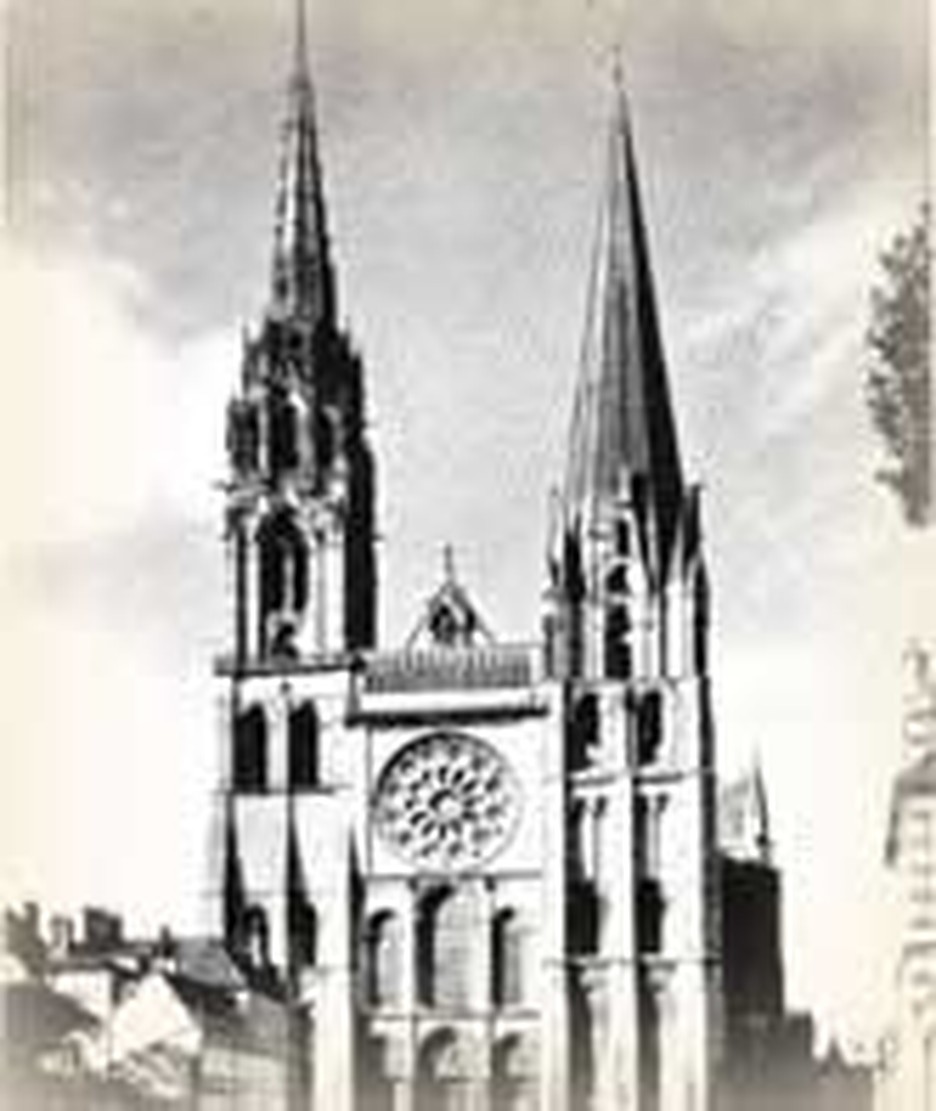
"Fire! Fire!"
On this night, June 10, 1194, the people of Chartres ran from their homes as flames colored the sky red. Despair reigned as they saw their cathedral ablaze. Not only had they just poured money and years of work into major repairs on it, but in it was one of the most precious relics of Christendom, a tunic supposed to have been worn by Mary while she gave birth to Jesus. The town's prosperity was at stake, for thousands of Pilgrims flocked each year to see this sacred item. Furthermore, there were people inside the church. As the grand old church, fashioned in romanesque style, burned to the ground, the town read its doom in loss of pilgrims and loss of the guardians who protected the sacred piece of clothing.
And then, as the smoke subsided, behold, a miracle! Out of the vault came the missing men, unsinged, holding aloft the treasure of Chartres. To the townsfolk, this could mean only one thing: the fire was part of a divine plan. The Virgin had protected her own after all. The cathedral was to be rebuilt.
Immediately the authorities made plans. They hired workmen and cleared the burned out site of rubble. But funds soon ran low. It appeared that work would have to stop.
The cost of such a project was great. To raise funds, church authorities sold indulgences (vouchers for pardon of sins). Church goers held fairs and sales on days dedicated to the Virgin. Priests traveled the country-side, preaching passionate sermons that extolled the value of Chartres' famous relic and the importance of a new cathedral.
Passersby gave generously. One story claimed that an English boy, passing through the area, gave the only thing of value he had--a gold necklace he had bought for a girl at home. The Virgin appeared to him that night in a bright light, blessed him for his act--and bade him be chaste from then on. Through such examples, fictitious or otherwise, people were convinced to open their wallets.
Chartres rose quickly by medieval standards. Unlike some cathedrals, which took centuries to raise, it was completed in less than a hundred years.
When the Cathedral was done, its south steeple probed three hundred and fifty one feet into the sky--as if rising gracefully to the doorstep of heaven. (The taller north steeple was not completed until the sixteenth century). Over 10,000 images graced the cathedral, many of them carved into its stone columns. Vast expanses of dark-colored glass glistened like jewels in the sun. Even so (according to Henry Adams) the interior was gloomy and mysterious.
The Gothic form of architecture with its buttresses and pointed arches was well established by the time Chartres was rebuilt. Consequently, many of the best Gothic elements were designed into the Cathedral. For the first time, flying buttresses (braces outside heavy stone churches to keep their walls from pushing apart from the weight of the vaults and steeples) were conceived to accentuate the design, rather than added as mere reinforcements. Chartres also boasted the first stone image of Mary. Like its famous counterpart in Paris, it is also called "Notre-Dame" (Our Lady).
The present day Cathedral of Notre-Dame, Chartres, was dedicated in October, 1260.
Bibliography:
- Adams, Henry. Mont-Saint-Michel and Chartres; with an introduction by Ralph Adams Cram. Boston: Houghton Mifflin, 1933.
- Favier, Jean. The world of Chartres. New York: H.N. Abrams, 1990.
- Simson, Otto von. The Gothic cathedral: origins of Gothic architecture and the medieval concept of order. Pantheon, 1956.
- Various encyclopedia and internet articles.
Last updated July, 2007


